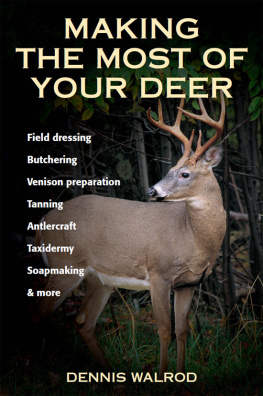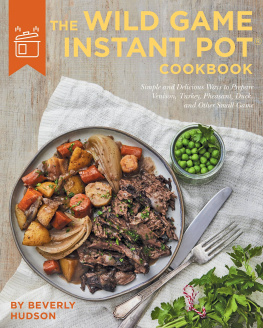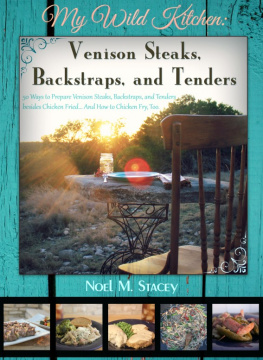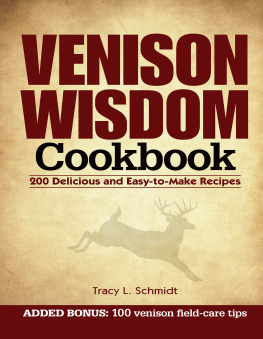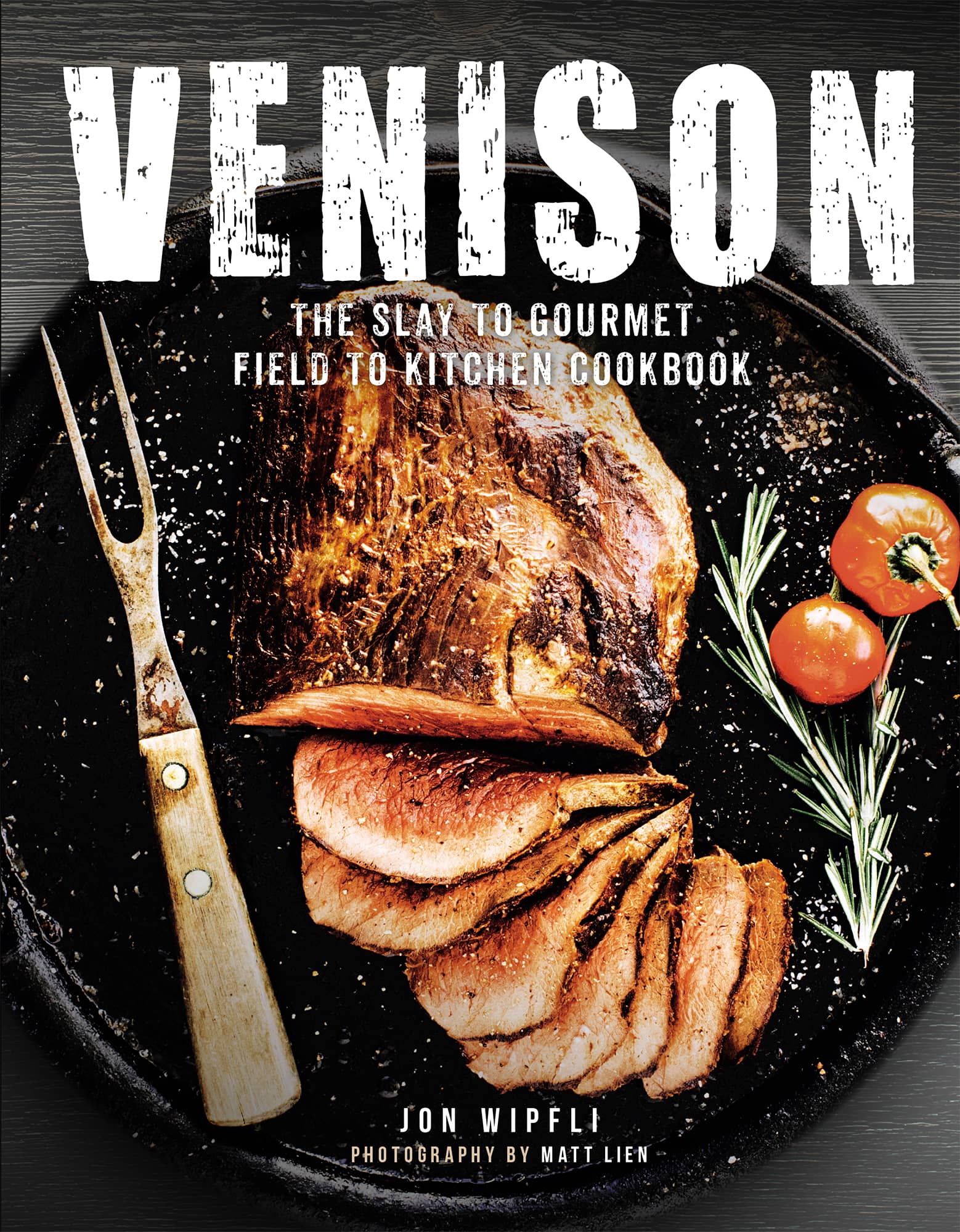VENISON
THE SLAY TO GOURMET FIELD TO KITCHEN COOKBOOK
JON WIPFLI
PHOTOGRAPHY BY MATTLIEN

PREFACE
By
NICK SCHIEFELBEIN
Venison is a cookbook for deer hunters, novice or veteran, and for anyone interested in one of our nations oldest traditions. The whitetail deer happens to be the most sought-after big-game animal in the United States. They can be found in most of the lower forty-eight states and have a population of over thirty million. The whitetail is also among the most adaptable of big-game species, surviving in the forests of the Northeast and Midwest, the semiarid landscapes of the Southwest, and the prairies of the plains states.
That said, the recipes in this book can easily be adapted to other members of the deer family, from mule deer and pronghorn antelope to elk and even moose.
Currently, those men and women who identify themselves as deer hunters number somewhere in the neighborhood of ten million. In the past, the deer-hunting population came from a predominantly rural background, but as our countrys demographics have shifted, so has the hunting community. Today, hunters come from all walks of life; as many call the city their home as do the country. They are a diverse group, not unlike their prey.
Hunters motivations for pursuing game varies as much as they do. Much of the literature published and television shows produced for deer hunters are geared toward trophy hunting. Like it or not, there is no doubt that this is the direction the deer-hunting industry is headed. But to assume all deer hunters are driven by the prospect of a heavily racked buck that will put them in the record books is false. For many deer hunters, the primary motivation is simple: venison.
Now more than ever people are putting a greater value on where their food comes from. The slow-food revolution has sparked an interest in organic and sustainable food sources. Nothing is better suited to that model than hunting wild meat. Attitudes toward hunting are ever evolving, but the notion that harvesting your own meat is barbaric or somehow backward couldnt be further from the truth. To put it bluntly, if you really want to know where your food comes from and how it was processed, then kill it, butcher it, and enjoy the fruits (meats) of your labor.
With that in mind, prepare to enjoy an insightful step-by-step guide to turning your wild game into gourmet-quality table fare. The book is broken down into chapters that reflect the chronology in which a hunter procures his or her venison, butchers it, and finally prepares it. Therefore, we start at the beginning, the hunt, and a discussion of ethics and responsibility.
Chapter two covers the more technical aspects of butchering the animal after it has been harvested. It is important to note that, as with the old adage, Theres more than one way to skin a cat, there is also more than one way to skin a deer. The same goes for the butchering process. Presented here, however, is the method that was taught to the author and which has proved effective for him.
The last chapter gets down to the nitty-gritty. An in-depth look at recipes that use good ingredients and perhaps some cooking techniques that are new to you and which bring out all the flavor potential of your venison. Whether blacktails, mulies, or the ever-popular whitetails are currently filling your freezer, these recipes will not disappoint.
Before you get into this book, I want to be up front with some facts that might leave you wondering why you bought it or picked it up in the first place. First, Im not a great hunter, chef, or writer, yet somehow you are holding a hunting and cooking book written by me in your hands. That said, I have put a great deal of thought and effort into getting better at all these things, and the results have made my life much more fulfilling.
Thats what I want to pass on to you.
I was raised in a hunting family but did not begin taking the sport seriously until I was in my mid-twenties. Although many times I would end a day in the field empty-handed, the experiences kept me going back. The camaraderie among family and friends, the peacefulness of solitude, and the lessons learned out there all made coming home empty-handed worth the effort. Slowly, after years of practice, my failures taught me how to be successful and my freezer began to fill up with game. If nothing else, I hope this will encourage anyone interested in hunting to give it a try and to persevere through failure.
If you are looking for guidance or advice, it may be worthwhile to spend some time at a local gun club or at an event sponsored by a sporting group such as Pheasants Forever. You will find plenty of like-minded people interested in the art of hunting. And hunters, especially those who have enjoyed a cocktail or two, are usually eager to share their stories from the field. If you are one of the lucky ones, you may be let in on some safeguarded tips that only experienced hunters have learned throughout the years. I venture to say that you may even find yourself some new friends along the way.
ETHICS
The conversation of ethics and hunting cannot be ignored. Anti-hunting groups and hunters have been pushing their agendas for decades. Like any debate, there is validity to the arguments on both sides. Even though I generally do not agree with the anti-hunting agenda, its proponents offer some valuable talking points. History has proven that with a lack of hunting regulations, mankind is able to decimate a species to the point of extinction. Additionally, there is evidence of an extreme few hunters who have shown no signs of mercy, sportsmanlike behavior, or empathy in the act of killing. Undeniably, this reflects poorly on hunters as a whole. To counteract this, I recommend two critical considerations be taken into account before hunting game:
1. KILL EFFICIENTLY.
2. EAT WHAT YOU KILL.
There is much more that could be said of these recommendations; however, the purpose of offering these simple and obvious takeaways is to help anchor your hunting experiences, both morally and ethically. The hunting community will continue to be viewed more positively when we all attend to these guidelines with intention and heart.




